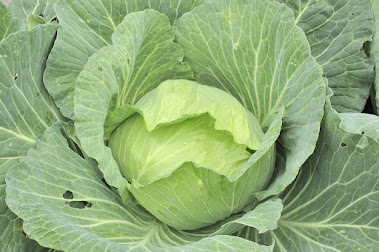Ferment Your Way to Better Gut Health with Sauerkraut
In the recent epoch, fermented sustenance has amassed extensive admiration as a consequence of their plausible health rewards. Sauerkraut, a time-honored food, has persisted through centuries and been a primary constituent in numerous established diets. In this manuscript, we shall scrutinize what sauerkraut essentially embodies, its plethora of health gains, and the modus operandi to fabricate it within the confines of your own abode.
What is Sauerkraut?
Sauerkraut, an intriguing and awe-inspiring foodstuff that has been enjoyed for centuries, is created by shredding cabbage and mixing it with salt. Through a curious alchemical process, the salt facilitates the extraction of water from the cabbage, which in turn creates an anaerobic environment that allows for the proliferation of beneficial bacteria. These remarkable microorganisms convert the sugars in the cabbage into lactic acid, which gives sauerkraut its unmistakable tangy flavor.
Not only is it facile to make in the comfort of your own kitchen, but the benefits to your well-being are undoubtedly worth it. Simply take care to use fresh cabbage and sterilized equipment to prevent contamination, and supervise the fermentation process to guarantee that your sauerkraut achieves your desired level of acidity.
Health Benefits of Sauerkraut
Sauerkraut is an enigmatic and captivating food that possesses a remarkable range of health benefits. It is a veritable cornucopia of probiotics, those resilient and mighty microorganisms that have been shown to bestow numerous advantages upon human health. Studies have indicated that these beneficial bacteria play a crucial role in sustaining healthy digestive function, promoting an impregnable immune system, and even diminishing the risk of certain ailments.
Sauerkraut is endowed with an especially bountiful supply of Lactobacillus bacteria, which are vital for the fermentation process that imparts the characteristically tart taste of sauerkraut. These bacteria have been demonstrated to augment the digestive process by breaking down food and rendering their nutrients more accessible to the body. Furthermore, they have been associated with a lower incidence of gastrointestinal issues such as diarrhea and constipation.
In addition to its profusion of probiotics, sauerkraut is a treasure trove of vitamins and minerals, including vitamin C, vitamin K, and potassium. It is also an outstanding source of dietary fiber, which is indispensable for maintaining regular bowel movements and averting constipation. Additionally, research has suggested that the high levels of antioxidants present in sauerkraut may serve to safeguard against cell damage and even lessen the risk of certain types of cancer.
Sauerkraut is an exceptional food that showcases a wide array of benefits for human health. With its abundance of probiotics, vitamins, and minerals, it is a phenomenal selection for individuals looking to optimize their digestive function, fortify their immune system, and enhance their overall wellness.
How to Make Sauerkraut
Prepare yourself for a dizzying and explosive ride into the world of sauerkraut fermentation as we reveal our top tips for achieving a perfectly tangy and gut-healthy batch of sauerkraut.
Use the Right Cabbage: This is a crucial step in the process. Choose a fresh, organic cabbage that is firm to the touch and free from any damage or blemishes. Red or green cabbage both work well, but keep in mind that red cabbage will produce a more vibrant color.
Shred Uniformly: Whether you choose to shred by hand or with a food processor, make sure the pieces are of equal size. Uniformly shredded cabbage will ensure even fermentation and a consistent flavor.
Massage with Salt: Give your cabbage some love by massaging it with salt until it starts to release its water. This is a critical step in creating the brine that is necessary for fermentation.
Pack it Tightly: Don't be afraid to get your hands dirty and pack the cabbage tightly into your jar or crock. This will eliminate any air pockets and promote even fermentation.
Weigh it Down: To ensure your cabbage remains fully submerged in the brine, place a weight on top. Clean stones or a glass jar filled with water both work well.
Keep it Covered: Use a clean towel or cheesecloth to cover your container, securing it with a rubber band or string. This will keep out any unwanted bacteria or debris.
Be Patient: This is perhaps the most challenging part of the process. Allow your sauerkraut to ferment at room temperature for at least a week, checking it periodically for mold or scum.
Experiment: Once you've mastered the basic sauerkraut recipe, feel free to experiment with different flavors and ingredients. Carrots, apples, ginger, or spices can all be added to create unique and tantalizing flavor combinations.
With these tips in mind, you're well on your way to achieving gut-healthy perfection with your homemade sauerkraut. Happy fermenting!




Comments
Post a Comment